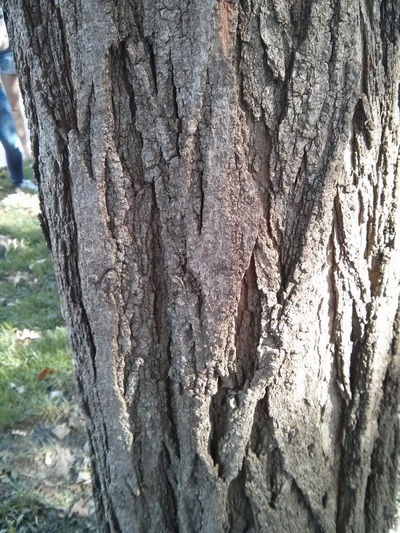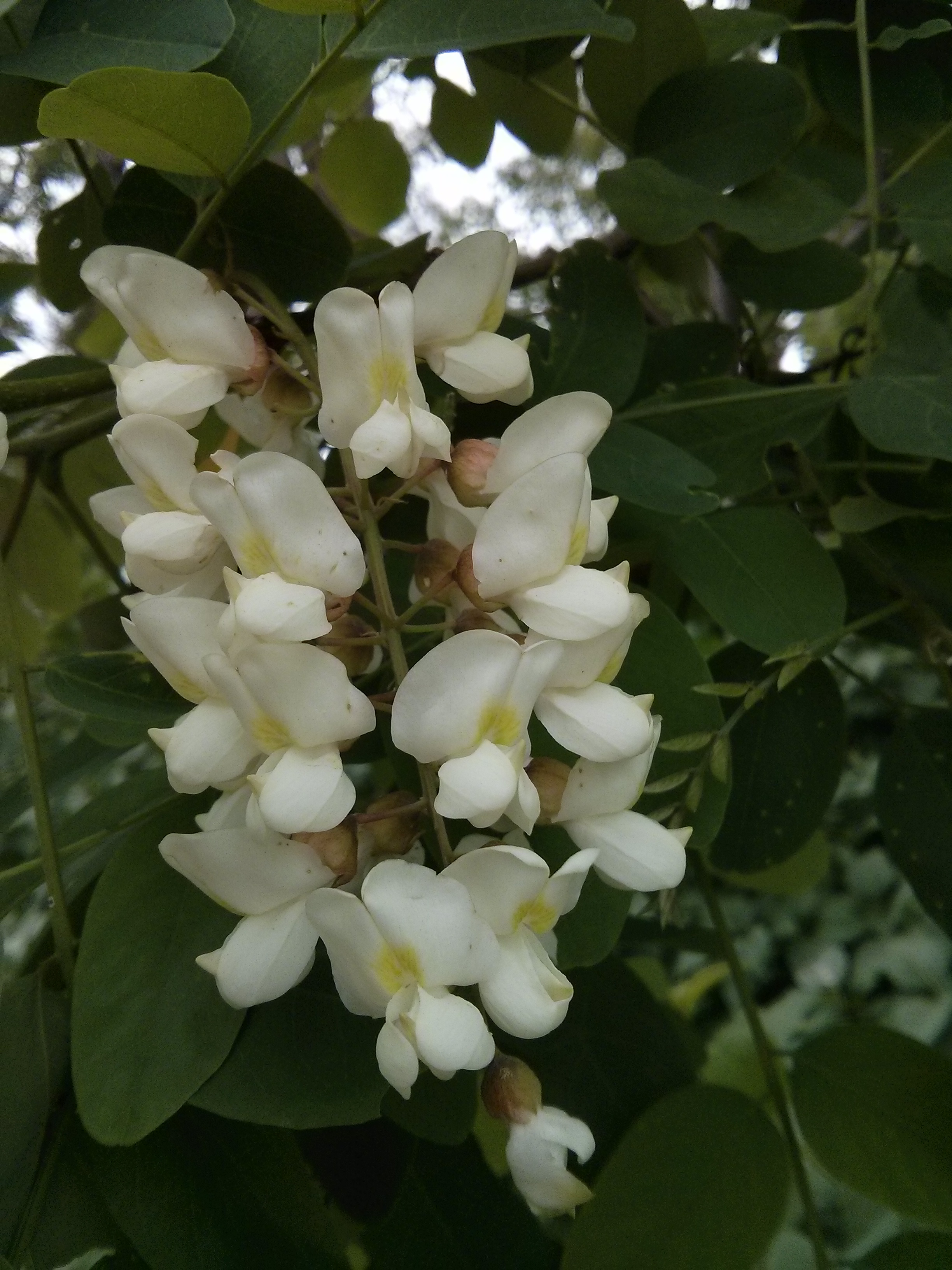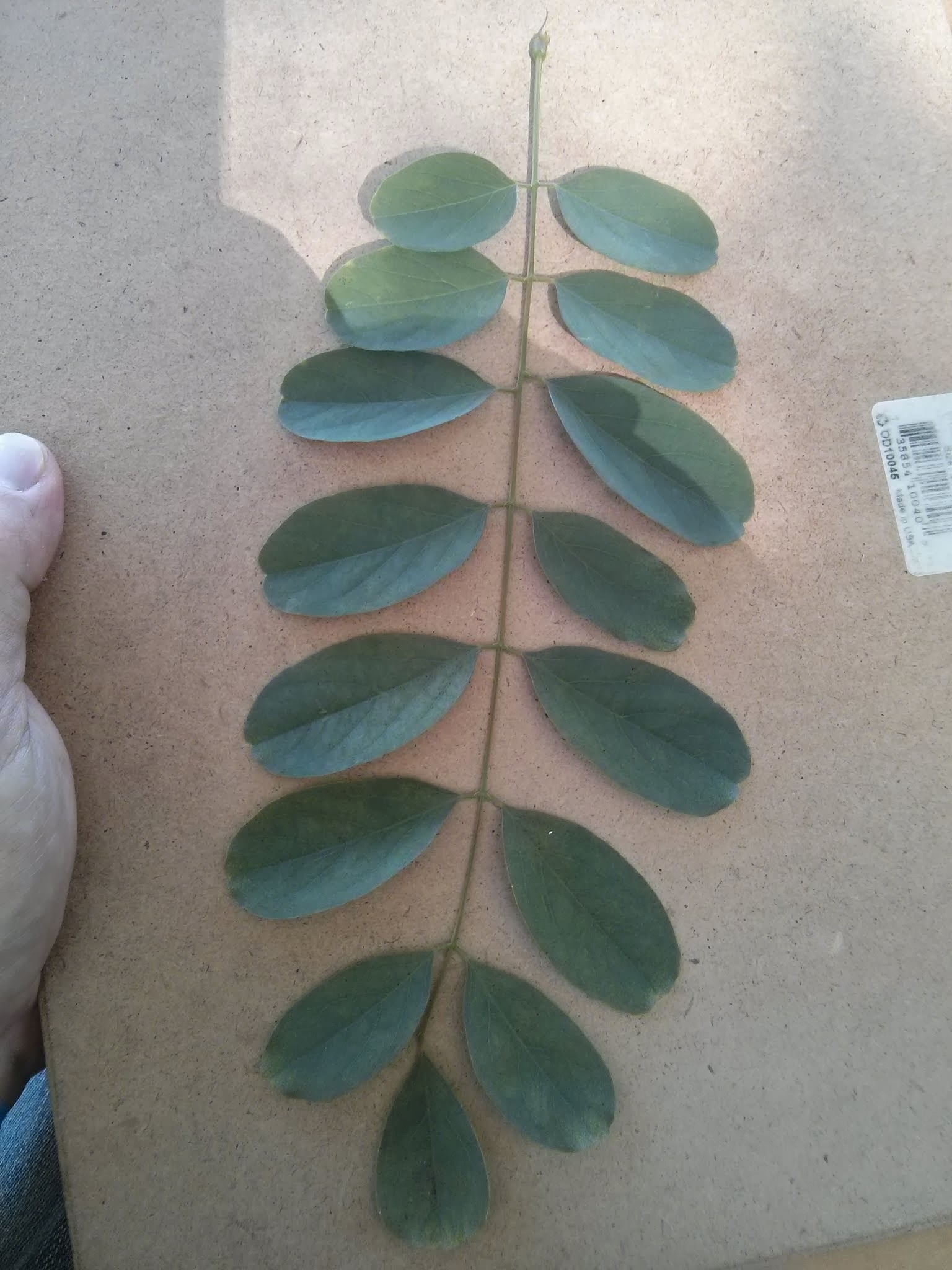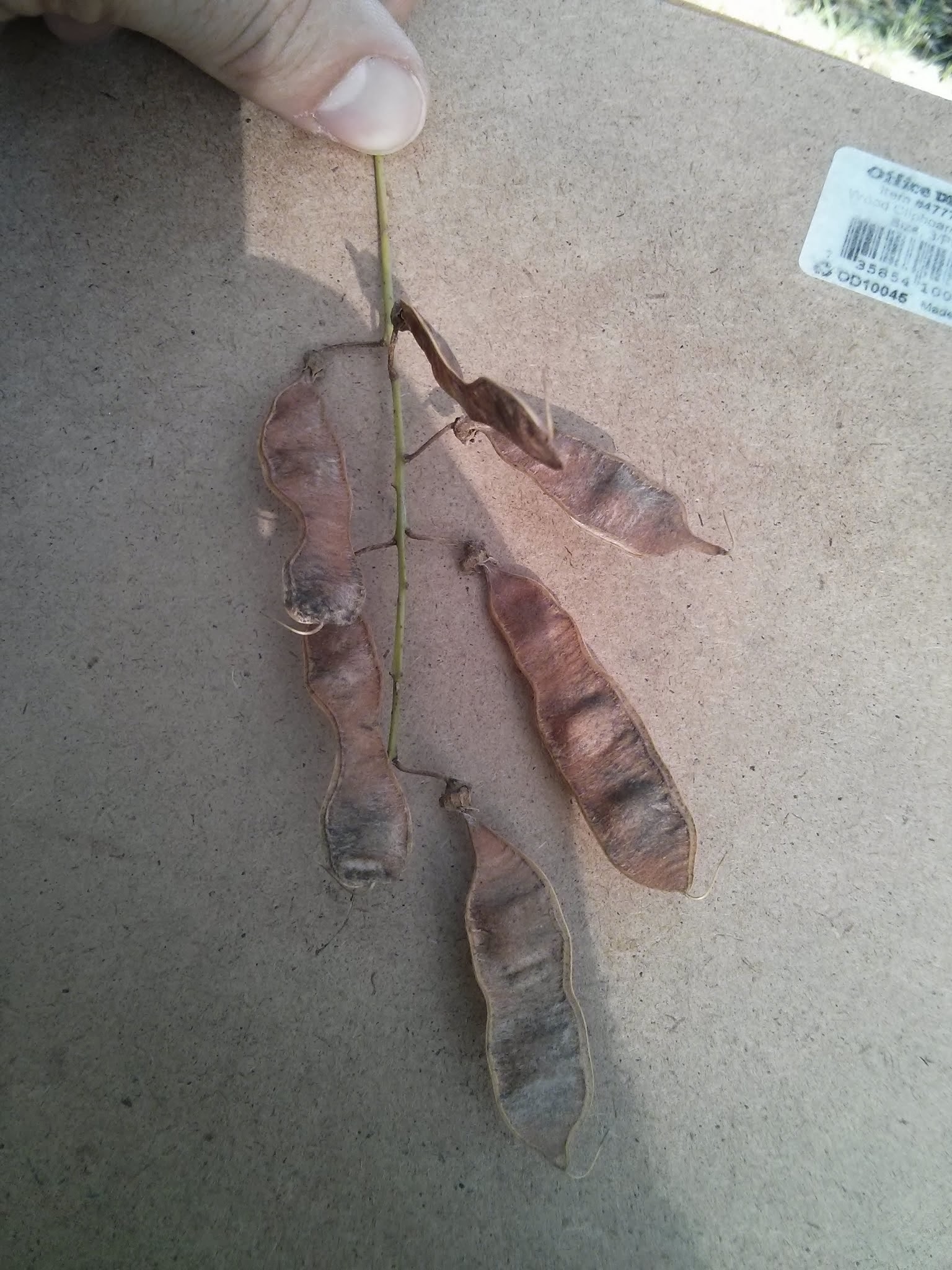This plant is **invasive** in Minnesota. Do not plant.
Common Name: black locust
Scientific Name:
Family: Fabaceae
Genus: Robinia
Species: pseudoacacia
Hardiness Zone: 3 to 8
Height: 30-50 ft.
Width: 20-25 ft.
Common Characteristics:
Black locust has nitrogen-fixing attributes, which is a reason why they were first planted here. Now it is listed as an invasive plant in Minnesota. They can spread by means of seed distribution or by root suckers, forming colonies. The leaves are pinnately compound with anywhere from 7 to 29 leaflets, making the leaf sometimes be a foot long in length. The leaflets are dark-blue green and ovate in shape. The bark is light gray and thick that is deeply furrowed turning into long forking ridges. The twigs are dark brown with a pair of spines, which are modified leaves, at the nodes. Fragrant wisteria-like white flowers bloom in late spring. The flowers are followed by purple-brown seed pods known as legumes that are 4"-5" long. In the legumes, there are 3 to 14 dark brown beanlike seeds.
Where it Grows:
Black locust does best in moist to dry rocky soils. It can be found growing in open fields and woodlands. Does best in full sun and tends to dislike shady areas. It is tolerant of alkaline and acidic soils, salt spray, road salt, and drought. This tree does not tolerate sites with poor drainage.
How it's Used:
It is widely used as an ornamental and for erosion control on lands strip-mined for coal. Indigenous people from the area that is Virginia made bows from the wood.
Ecosystem Services:
The fragrant flowers attract insect pollinators providing pollen for nutrients and food.
Where it is Native To:
Black locust natively grows in the eastern United States. It is centralized in the middle of the Appalachian Mountains growing in West Virginia, western Virginia, western North Carolina, eastern Tennessee, and eastern Kentucky. It is also found growing in Missouri and Arkansas.
Known Varieties and Their Traits:
- Frisia black locust (Robinia pseudoacacia 'Frisia'): Yellow foliage; 40 feet high by 25 feet wide.
- Purple robe black locust (Robinia pseudoacacia 'Purple Robe'): Flowers are deep rosy-purple; new foliage emerges tinged with purple and matures to a bronze-green color.
- Twisty Baby® black locust (Robinia pseudoacacia 'Lace Lady'): Smaller size tree (20 feet high by 20 feet wide) with contorted limbs.
Problems:
Black locust is now known for growing aggressively, so it is considered invasive. It is not a recommended plant for landscape use. Any pruning must be done in the winter due to the tree "bleeding" during the spring. The tree has weak wood, making it susceptible to storm damage. It is susceptible to locust borer which can kill the tree.
Notes: This species is currently listed as invasive; for more information visit the DNR's Black locust page.
References:
The Morton Arboretum
Missouri Botanical Garden
Little, E. L. (n.d.). National Audubon Society Field Guide to North American Trees; Eastern Edition. (Original work published 1980)



